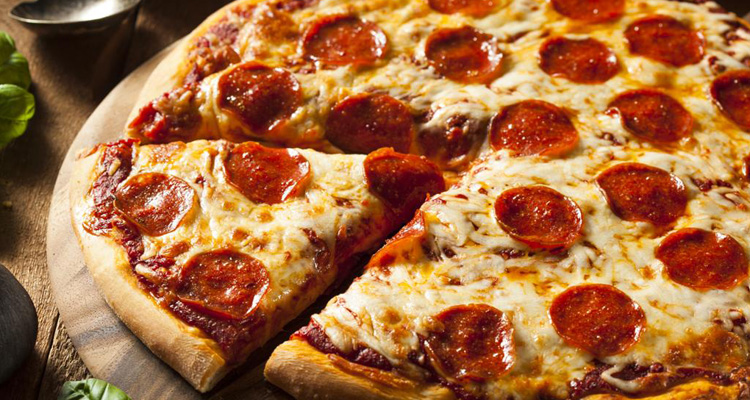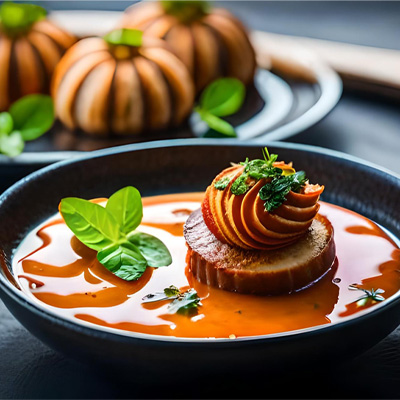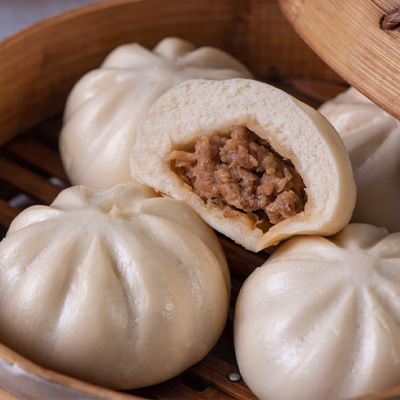Pizza, with its irresistible combination of a crispy crust, savory sauce, melted cheese, and an array of delectable toppings, is a culinary delight enjoyed by people around the globe. In this comprehensive guide, we will take you on a mouthwatering journey through the world of pizza, exploring its rich history, the art of crafting the perfect pie, and the diverse regional styles that have made it an iconic dish.
Nutrition Facts
- Kcal
340 - Fat
13 g - Choles
35 mg - Sodium
780 mg - Carbs
40 g - Fiber
2 g - Sugar
2 g - Protein
15 g
Note: The nutrition facts are approximate values and may vary based on the specific ingredients used and any additional toppings or syrups added.
Ingredients
For the Pizza Dough:
- 1 pound (450g) pizza dough (store-bought or homemade)
- Flour, for dusting
For the Pizza Sauce:
- 1 cup tomato sauce
- 1 clove garlic, minced
- 1 teaspoon dried basil
- 1 teaspoon dried oregano
- Salt and pepper to taste
- For Toppings:
- 8 ounces (225g) fresh mozzarella cheese, thinly sliced
- Fresh basil leaves
- Extra-virgin olive oil
Directions
- Preheat your oven to the highest temperature it can reach (usually around 475-500°F or 245-260°C). Place a pizza stone or an inverted baking sheet on the center rack to heat up.
- While the oven is preheating, roll out the pizza dough on a floured surface to your desired thickness. If the dough is store-bought, follow the package instructions for resting and rolling.
- In a small saucepan, combine the tomato sauce, minced garlic, dried basil, dried oregano, salt, and pepper. Simmer over low heat for about 5 minutes, allowing the flavors to meld. Remove from heat.
- Carefully transfer the rolled-out pizza dough to a piece of parchment paper large enough to fit your pizza stone or baking sheet.
- Spread the prepared pizza sauce evenly over the dough, leaving a small border for the crust.
- Arrange the fresh mozzarella slices over the sauce.
- Slide the parchment paper with the pizza onto the preheated pizza stone or baking sheet in the oven.
- Bake for 12-15 minutes or until the crust is golden brown, and the cheese is bubbly and slightly browned.
- Remove the pizza from the oven and let it cool for a minute. Then, tear fresh basil leaves and scatter them over the hot pizza.
- Drizzle extra-virgin olive oil over the pizza.
- Slice the Margherita pizza, serve hot, and enjoy!
The History of Pizza
Pizza's Ancient Origins
Pizza's history dates back to ancient civilizations like Greece and Egypt, where people first baked flatbreads with various toppings. These early iterations laid the foundation for the modern pizza we know and love.
Neapolitan Pizza: The Birth of a Classic
In the 18th century, Naples, Italy, gave birth to the Margherita pizza, a simple yet iconic pie with tomato, mozzarella, and basil. It was created in honor of Queen Margherita of Savoy and remains a Neapolitan specialty.
Pizza in America
Immigrants from Italy brought pizza to the United States in the late 19th and early 20th centuries. New York City and Chicago developed their unique pizza styles, with thin, foldable slices in New York and deep-dish, cheesy pies in Chicago.
Crafting the Perfect Pizza
The Dough
The foundation of any great pizza is its dough. A balance of flour, water, yeast, and salt is kneaded to perfection, resulting in a crust that's crispy on the outside and delightfully chewy inside.
The Sauce
Pizza sauce is typically made from ripe tomatoes, olive oil, garlic, and a medley of herbs. It provides the perfect tangy contrast to the cheese and toppings.
The Cheese
Mozzarella is the cheese of choice for most pizzas due to its ideal meltability and mild flavor. However, some pies feature other cheeses like Parmesan, provolone, or goat cheese.
Toppings Galore
Pizza's versatility shines through its toppings. From classic pepperoni and mushrooms to more adventurous options like pineapple or prosciutto, there's a pizza topping for everyone.
Regional Pizza Styles
New York-Style Pizza
Known for its thin, foldable slices, New York-style pizza is an iconic street food. It's characterized by its crisp crust, wide slices, and delicious simplicity.
Chicago Deep-Dish Pizza
Chicago's deep-dish pizza is a hearty delight. Its thick, buttery crust acts as a vessel for layers of cheese, toppings, and chunky tomato sauce.
Neapolitan Pizza
Neapolitan pizza, hailing from Naples, Italy, features a thin, soft crust with minimal toppings. It's all about simplicity and high-quality ingredients.
Pizza FAQs
What's the origin of the term "pizza"?
A: The term "pizza" likely comes from the Latin word "picea," which referred to the blackening of bread crust during baking.
Can you freeze leftover pizza?
A: Yes, leftover pizza can be frozen. Wrap slices or whole pies tightly in plastic wrap and store in the freezer for up to two months.
Is Hawaiian pizza really from Hawaii?
A: No, Hawaiian pizza was invented in Canada. It features ham and pineapple and is named after the brand of canned pineapple used by its creator.
What's the ideal pizza-to-crust ratio?
A: Pizza preferences vary, but a balanced ratio of sauce, cheese, and toppings to crust ensures a satisfying bite.
Can you make a gluten-free pizza?
A: Yes, gluten-free pizza crusts are available, typically made from rice flour, tapioca starch, or almond flour.
Is deep-dish pizza really pizza?
A: Deep-dish pizza is a unique and delicious variation, but it's quite different from traditional pizza due to its thick, pie-like crust.
Conclusion
Pizza is not just a dish; it's a cultural phenomenon that has transcended borders and brought joy to countless palates. Whether you prefer the classic simplicity of Neapolitan pizza, the foldable perfection of New York-style, or the hearty indulgence of Chicago's deep-dish, pizza offers a slice of happiness for everyone. So, the next time you savor a slice, do so with a deeper appreciation for the history, craftsmanship, and sheer deliciousness that make pizza a global favorite.













